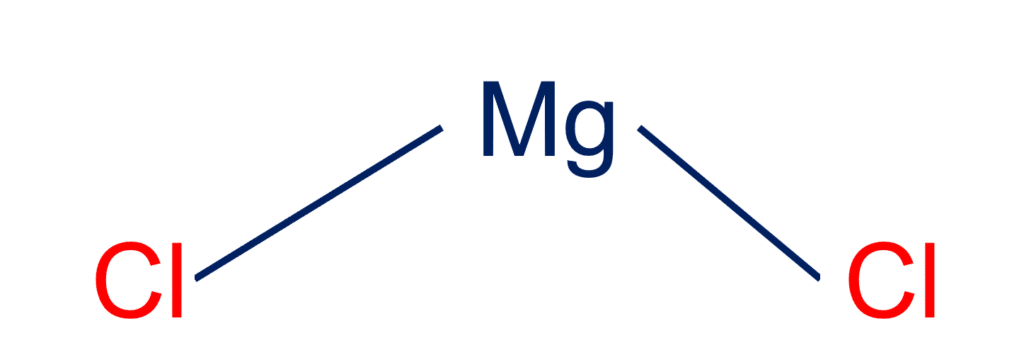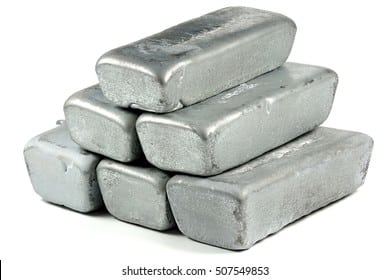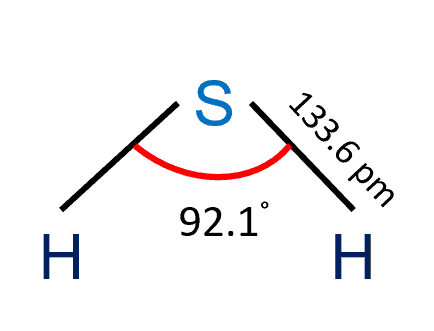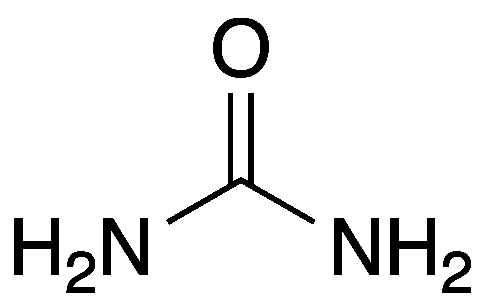Magnesium Chloride (MgCl2) is an ionic compound and a source of magnesium that is used to replenish electrolytes and treat conditions associated with magnesium deficiency. The anhydrous form of Magnesium Chloride contains 25.5 percent elemental magnesium by mass.
| Compound Name | Magnesium Chloride (MgCl2) |
| Melting point | 714 °C |
| Molecular weight | 95.21 |
| Density | 2.32 g/cm³ |
Table of Contents
What is Magnesium Chloride (MgCl2)?
Magnesium chloride is an inorganic compound that contains one magnesium ion and two chloride ions. In medicine, the compound is employed as a source of magnesium ions, which are required for various biological processes. It has also been utilised in alloys and as a cathartic.
Magnesium chloride salts are very soluble in water, and the hydrated form may be recovered from brine or sea water.
The compound appears to be a colorless crystalline solid with a melting point of 714 degrees C.

Some more important features of MgCl2 are listed below:
- MgCl2 consists of Mg2+ and Cl– ions held together by ionic bonding forces; PCl3 consists of polar molecules, so intermolecular dipole-dipole forces are present.
- Solid magnesium chloride is a non-conductor of electricity because the ions aren’t free to move. However, it undergoes electrolysis when the ions become free on melting.
- Magnesium chloride is used to treat or prevent magnesium deficiency (lack of natural magnesium in the body).
MgCl2 ionic or covalent?
MgCl2 is an ionic compound because chemical bonds in the molecule are produced by electron transfers between Mg and Cl atoms. Ionic compounds are made up of ions, which are charged particles formed when an atom (or group of atoms) acquires or loses electrons.
Magnesium is an alkaline earth metal that loses two electrons to produce magnesium cation, whereas chlorine, a nonmetal, absorbs one electron to form chloride ion. The electrostatic force of attraction occurs between oppositely charged cations and anions, resulting in the production of the ionic compound.
In addition, the electronegativity value of Mg is 1.31 whereas for Cl the value is 3.16. The difference between the electronegativity value is = 3.16 – 1.13 = 1.85.
If the electronegativity of a chemical exceeds 1.7, it is said to be ionic.
Please refer to the full article “Is MgCl2 ionic or covalent?”.
Magnesium Metal
Magnesium (Mg) is a chemical element with an atomic weight of 24,312 and an atomic number of 12. It belongs to Periodic Table Group IIa. Magnesium is a metallic element with a silvery-white colour. It has a relative density of 1740 kg/m3 (0.063 pound per inch3 or 108.6 pounds per square foot). Because of its low weight and ability to make mechanically robust alloys, it has long been recognised as the lightest structural metal in the industry.
Related Links
Is Nh3 Polar?
CLF3 Lewis Structure, Molecular Geometry, and Polarity
NH3 Lewis Structure & Molecular Geometry
SiCl4 Polar or Nonpolar| Easy Explanation
Is BF3 Polar or Nonpolar?| BF3 Molecular Geometry
Hydrogen Phosphate Formula
Frequently Asked Questions
1. Is chlorine a metal?
Chlorine (Cl) is the second lightest member of the periodic table’s halogen elements, or Group 17 (Group VIIa). Because it lacks metal-like properties such as electrical conductivity, flexibility, and strength, chlorine is classified as a nonmetal.
Check the full article “Is chlorine a metal?”.
2. Is hydrogen a metal?
While hydrogen has the same ns1 electron configuration as alkali metals, it is not considered a metal because it forms cations (H+) more slowly than other alkali metals. As a result, the simple answer to the question “is hydrogen a metal?” is no.
3. Is magnesium magnetic?
A magnet will weakly attract paramagnetic metals such as magnesium, titanium, molybdenum, and tantalum are weakly attracted to a magnetic force.
4. What is sulfur electronic configuration?
Sulfur electronic configuration is 1s2 2s2 2p6 3s2 3p4
5. is silicon carbide ionic or covalent?
Silicon Carbide (SiC) is solid with a covalent network. When we examine its structure, we can see that silicon atoms are tetrahedrally linked to carbon atoms by a covalent connection.
6. What is silicon carbide?
SiC is a dark crystalline silicon and carbon combination that is used as an abrasive, a refractory, and in electric resistor.
5. What is a moissanite?
Moissanite, commonly known as silicon carbide, is a rare, naturally occurring mineral. It’s an incredible stone that mimics a diamond in almost every way. Moissanite even appears like a diamond in a conventional thermal probe. It seems as dazzling as its more expensive natural equivalent, the diamond, to the naked eye.
6. What is carborundum?
Carborundum is a trademark for silicon carbide, an inorganic substance discovered by E.G. Acheson in 1893 and for which he was granted a patent. Carborundum has a diamond-like crystal structure and is nearly as hard as diamond. It’s utilized as a cutting, grinding, and polishing abrasive, as well as an antislip additive and a refractory.
More Links
Delocalized pi bond
Metal Definition & Meaning| Simple Explanation
Polar versus Nonpolar Molecules
Hydrogen Phosphate Formula
Sodium Valence Electrons
Perchloric acid| Is It Super Acid?| 5 Key Points
- BCl3 Lewis Structure in four simple steps - November 1, 2023
- PH3 Lewis Structure in four simple steps - October 8, 2023
- PF3 Lewis structure in four simple steps - September 24, 2023



